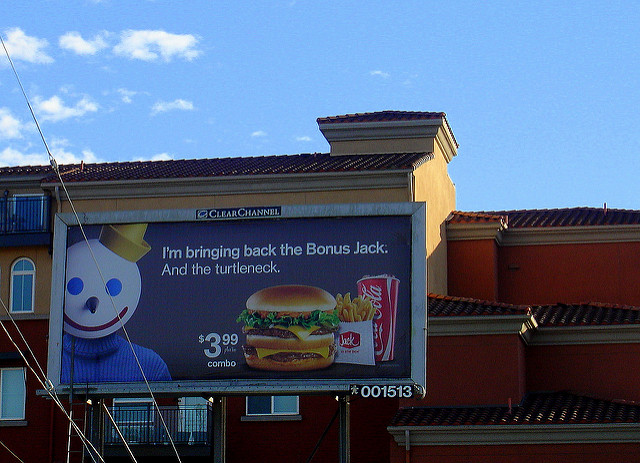In Metromedia, Inc. v. City of San Diego, 453 U.S. 490 (1981), the Supreme Court invalidated a San Diego ordinance that generally prohibited “outdoor advertising display signs.” The Court’s reasoning was that the city law regulating billboards reached “too far into the realm of protected speech.”
City was sued for banning outdoor signs
The ordinance banned outdoor signs in general, but it contained many exceptions, including government signs, signs at public bus stops, religious symbols, signs on public and commercial vehicles, and temporary political campaign signs. A group of outdoor advertising businesses sued, contending that the ordinance violated the First Amendment. A state trial court and an intermediate appeals court ruled in favor of the outdoor advertisers, but the California Supreme Court reversed. The state high court wrote that the ordinance involved “a proper application of municipal authority over zoning and land use for the purpose of promoting the public safety and welfare.”
Court ruled the ordinance was unconstitutional
The U.S. Supreme Court reversed the California high court, though no opinion commanded a majority of the justices. Writing for a plurality, Justice Byron R. White — joined by Justices Potter Stewart, Thurgood Marshall, and Lewis F. Powell Jr. — recognized the positives and negatives of billboards: “Billboards are a well established medium of communication, used to convey a broad range of different kinds of messages. . . . [However,] the billboard creates a unique set of problems for land use planning and development.”
White applied the test the Court had articulated for restrictions on commercial speech in Central Hudson Gas and Electric Corp. v. Public Service Commission (1980). He determined that “insofar as it regulates commercial speech the San Diego ordinance meets the constitutional requirements of Central Hudson.”
However, that was not the end of the inquiry for White, because the outdoor advertisers had raised broader First Amendment challenges, including the charge that the law discriminated against certain forms of noncommercial speech. White agreed that in discriminating against certain types of noncommercial speech, the ordinance did violate the First Amendment. He reasoned that many kinds of noncommercial speech would not fit into the ordinance’s protected exceptions and so would be banned. “With respect to noncommercial speech, the city may not choose the appropriate subjects for public discourse,” the plurality concluded.
Justice William J. Brennan Jr., joined by Justice Harry A. Blackmun, wrote a concurrence in which he reasoned that the law did not meet the Central Hudson test. Brennan expressed concern that the plurality’s analysis supported a total ban on commercial billboards.
Dissenters believed city could prohibit billboards
Justice John Paul Stevens dissented, believing that a city could prohibit billboards as one medium of communication without violating the First Amendment. Chief Justice Warren E. Burger also dissented, writing: “Today the Court takes an extraordinary — even a bizarre — step by severely limiting the power of a city to act on risks it perceives to traffic safety and the environment posed by large, permanent billboards.” Justice William H. Rehnquist also wrote a dissenting opinion, reasoning that “the aesthetic justification alone is sufficient to sustain a total prohibition of billboards within a community.”
Although Metromedia remains a confusing precedent for the lower courts to apply, it continues to serve as the Court’s central precedent on the regulation of billboards.

